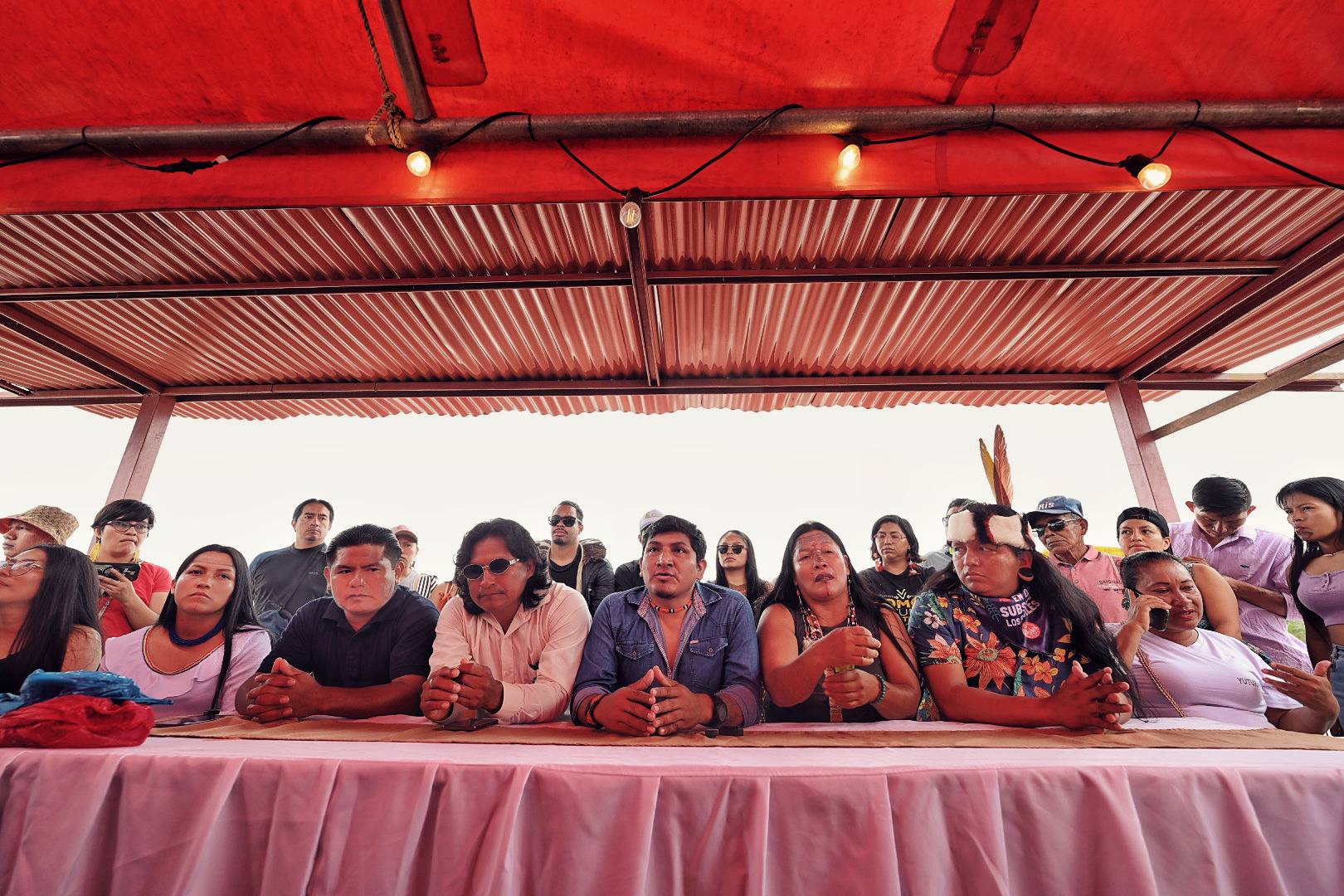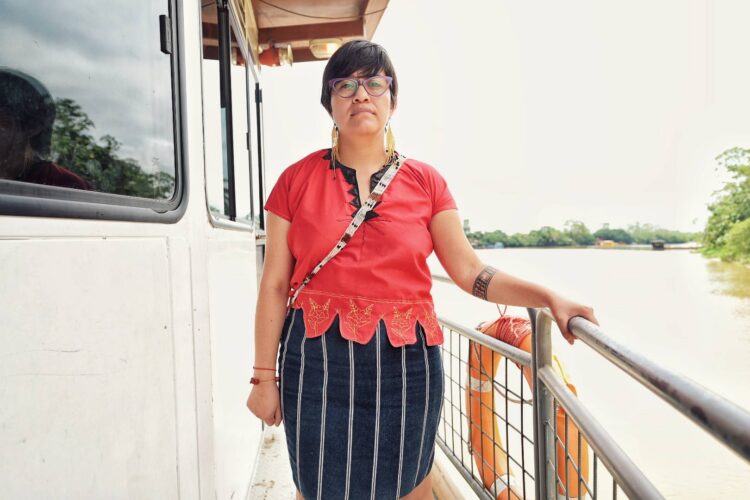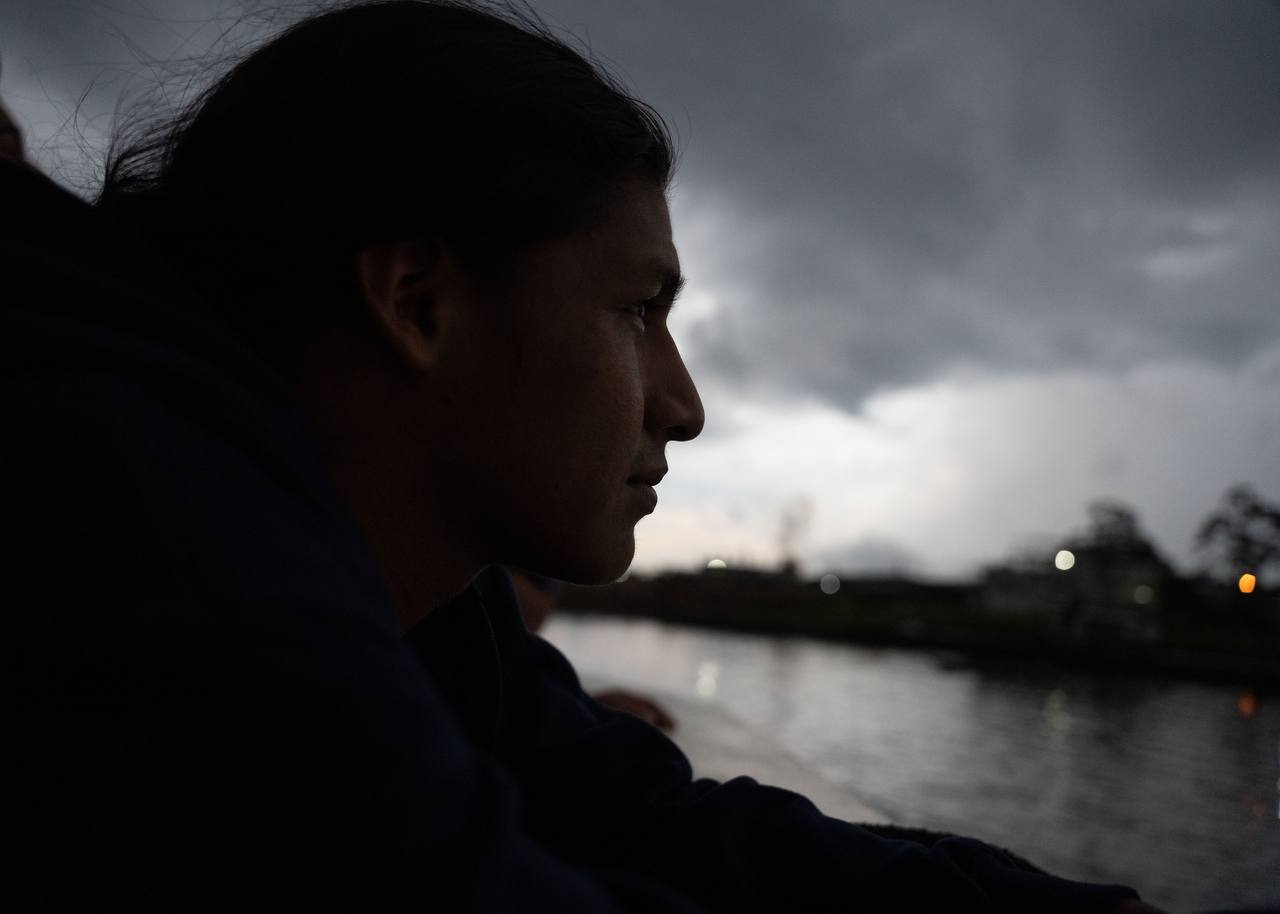
Yaku Mama Navigation Diary: Inside the Indigenous Flotilla Toward COP30
This will be a series of narrative and testimonial texts from the Yaku Mama Flotilla, which is sailing down the Amazon River toward Brazil.
by Lucía Ixchiu
First week
With my eyes full of green, surrounded by the sounds of water and the jungle, I begin this account from the heart of the flotilla. What is a K’iche Maya woman doing in the middle of the Amazon rainforest, on her way to Brazil? I feel the river and the forest, and how we become more connected as the journey unfolds.
Between the waters of the Napo and Yasuní rivers, we continue toward Pantoja, on the border between Ecuador and Peru — a region that, years ago, experienced conflict.
With the blessing and sound of Grandmother Cayambe, the glacier where the Amazon River is born, and with our offering received by the Earth, we begin this journey. We have already traveled a third of this voyage of sisterhood among territories, of solidarity, and of shared learning.
For the K’iche people, forests are an essential part of existence. To honor the Amazon is also to honor all the world’s jungles and forests. Our eyes are filled with color as we contemplate its biodiversity, yet our hearts ache knowing it is threatened by oil companies and all kinds of extractive industries that see it only as a resource and a profitable business.

Photo: Yaku Mama Collaborative Coverage
The songs of the birds break the silence, and the sound of the water accompanies us on the second day of our journey down the river. The Waorani people lead the protection of Yasuní National Park, having lived in harmony with it for hundreds of years — and today, we have come to their home. This is also the home of the pink river dolphin, which we caught a glimpse of as it disappeared into the waters of the Jatuncocha lagoon, along with hundreds of thousands of species that make up this great grandmother we call the Amazon rainforest.
At this moment, we sail southward, continuing with this flotilla of hope and solidarity among peoples. For most of us participating in this journey, this is a territory we are visiting and witnessing for the very first time.
In Coca, we held an exchange to learn from the experiences of peoples and organizations confronting the fossil fuel industry. At the end of the day, we joined a march for Mother Earth through the town’s streets, culminating in a political act where we covered the statue of Francisco de Orellana — the man credited with the “conquest” of the Amazon. We invoked the names of Amazonian defenders who were taken from us and concluded with an exchange of speeches before setting sail again the following day.
This flotilla, made up of several small boats, carries Indigenous peoples from different parts of the continent and the world. We travel along a route meant to amplify the voices of the territories and their first inhabitants.

